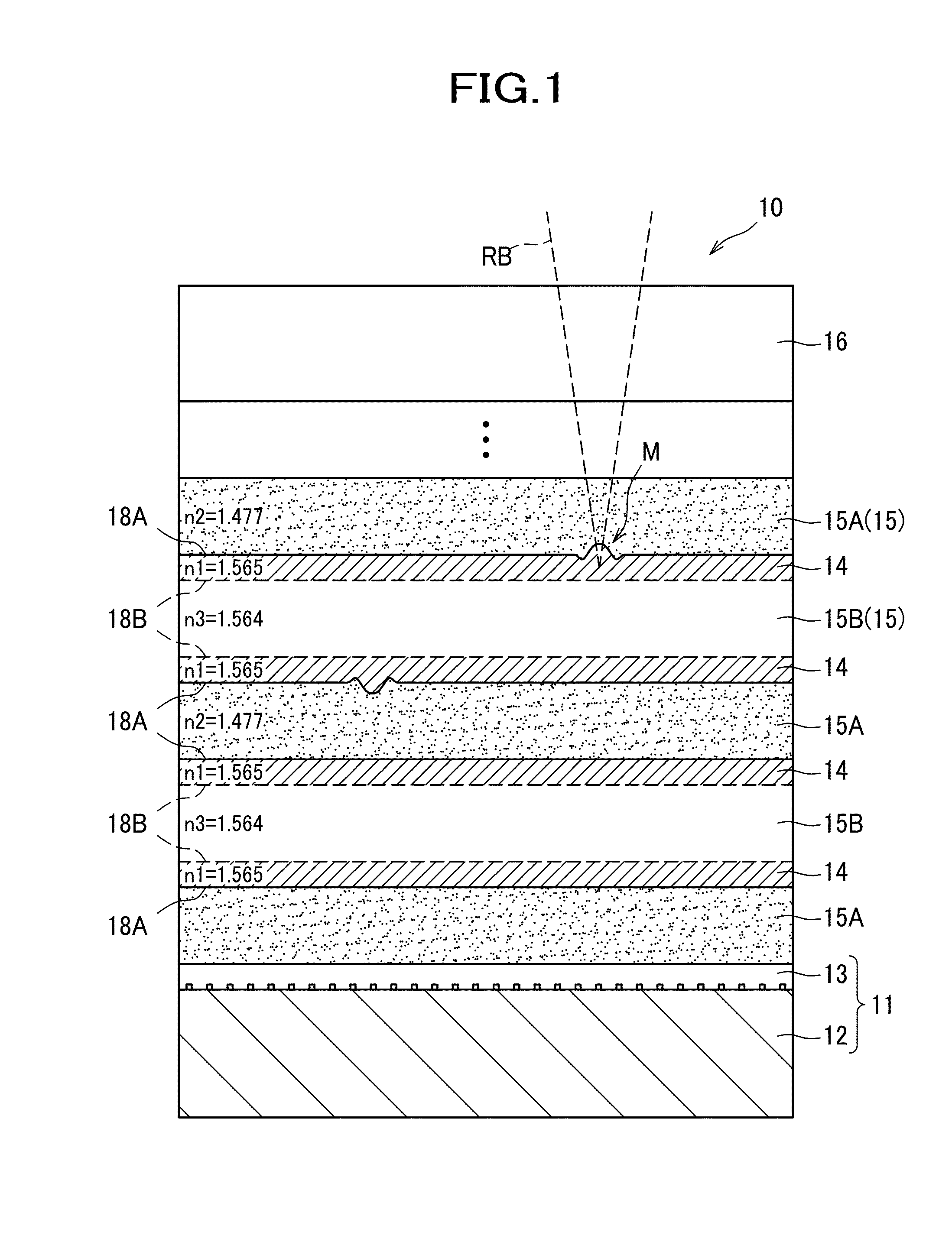Multilayer structure sheet and method for manufacturing same, and optical information recording medium and method for manufacturing optical information recording medium using multilayer structure sheet
a multi-layer structure and manufacturing method technology, applied in the direction of optical recording/reproducing/erasing methods, record information storage, instruments, etc., can solve problems such as cracking risk in recording layers, and achieve the effect of increasing the signal-to-noise ratio observed when information is retrieved therefrom
- Summary
- Abstract
- Description
- Claims
- Application Information
AI Technical Summary
Benefits of technology
Problems solved by technology
Method used
Image
Examples
experiment 1
[0132]Next, a description will be given of an experiment by which it has been confirmed that recording in an optical information recording medium can be achieved by causing deformation of a recording layer into a protrusive shape. It is however to be understood, as described above, that the present invention does not necessarily require a protrusively shaped recording layer.
1. Recording Material
example 1
[0133]The recording material, used in Example 1, includes a polymer binder and a dye dispersed in the polymer binder.
(1) Polymer Binder
[0134]Polymethylmethacrylate (manufactured by SIGMA-ALDRICH Corporation) was used as a polymer binder.
(2) Dye
[0135]The following two-photon absorption dye was used as a dye.
2. Method for Forming Recording Layer
[0136]The dye and the polymer binder were stirred and dissolved in a solvent (methyl ethyl ketone; MEK) to prepare a coating liquid, which was applied to a glass substrate by spin coating to form a film thereon. The thickness of the film was 1 μm. The refractive index of the glass substrate was 1.53.
[0137]The composition of the coating liquid was as follows:
Solvent:7gDye:72mgPolymer binder:500mg
3. Method for Experiment and Evaluation of Recording
[0138]The recording beam (pulsed laser: wavelength of 405 nm, repetition frequency of 76 MHz, and pulse width of 2 psec) was applied to the recording layer with the to peak power of 20 W (average power ...
experiment 2
[0149]Next, a description will be given of an experiment conducted to evaluate manufacturing methods by cracking which may appear in the recording layer depending upon the method applied.
1. Materials
(1) Recording Layer
[0150]The same materials were used as those used in Example 1.
(2) Pressure Sensitive Adhesive Layer
[0151]Acrylic ester-based adhesive was used.
(3) Recording Layer Support Layer
[0152]SD-640 (manufactured by DIC Corporation)
(4) Release Sheet
[0153]Polyethylene terephthalate film (with a silicone release layer applied on its surface)
PUM
| Property | Measurement | Unit |
|---|---|---|
| thickness | aaaaa | aaaaa |
| wavelength | aaaaa | aaaaa |
| thickness | aaaaa | aaaaa |
Abstract
Description
Claims
Application Information
 Login to View More
Login to View More - R&D
- Intellectual Property
- Life Sciences
- Materials
- Tech Scout
- Unparalleled Data Quality
- Higher Quality Content
- 60% Fewer Hallucinations
Browse by: Latest US Patents, China's latest patents, Technical Efficacy Thesaurus, Application Domain, Technology Topic, Popular Technical Reports.
© 2025 PatSnap. All rights reserved.Legal|Privacy policy|Modern Slavery Act Transparency Statement|Sitemap|About US| Contact US: help@patsnap.com



